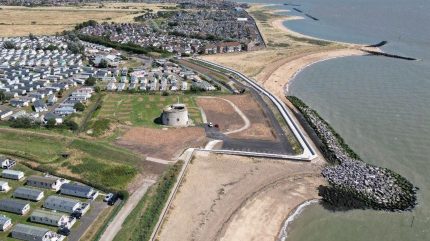
The Cockett Wick seawall improvement scheme, a part of the Essex and South Suffolk shoreline management plan in the UK, has been completed.
This initiative aims to provide enhanced protection against tidal flooding for around 3,000 homes and businesses.
With a £12m ($15.46m) investment, the works included the installation of 14,000 tonnes (t) of Norwegian granite and the construction of 330m of reinforced concrete footpath and seawall.
Additionally, 150 steel piles were driven into place.
The new seawall is designed to accommodate a further wall-raising in 50 years, anticipating future sea-level rise.
Decarbonisation is said to have been prioritised in the decision-making and was reached through collaboration with contractor, BAM Nuttall, and design consultant, Jacobs.
Jacobs project manager Louise Oldfield-Trim said: “A key factor in the project’s success was the full commitment to collaboration by the entire team, including the Environment Agency [EA], BAM and Jacobs.
“By prioritising sustainability at the forefront of the design, we developed an innovative scheme that achieved substantial carbon efficiencies. This essential cooperation throughout the design and construction stages ensured a smooth, cost-effective delivery.”
The design was amended to incorporate 152 recycled steel tube piles instead of new steel sheet piles, resulting in an estimated carbon saving of approximately 1,000t.
Further carbon savings were achieved by the EA’s decision to transport the revetment rock via six barge movements, which saved an additional 48t of carbon.
Additionally, approximately 1,200t of surplus rock from the project were redistributed.
These materials were used in local collaboration projects with landowners to protect other seawalls from erosion.


